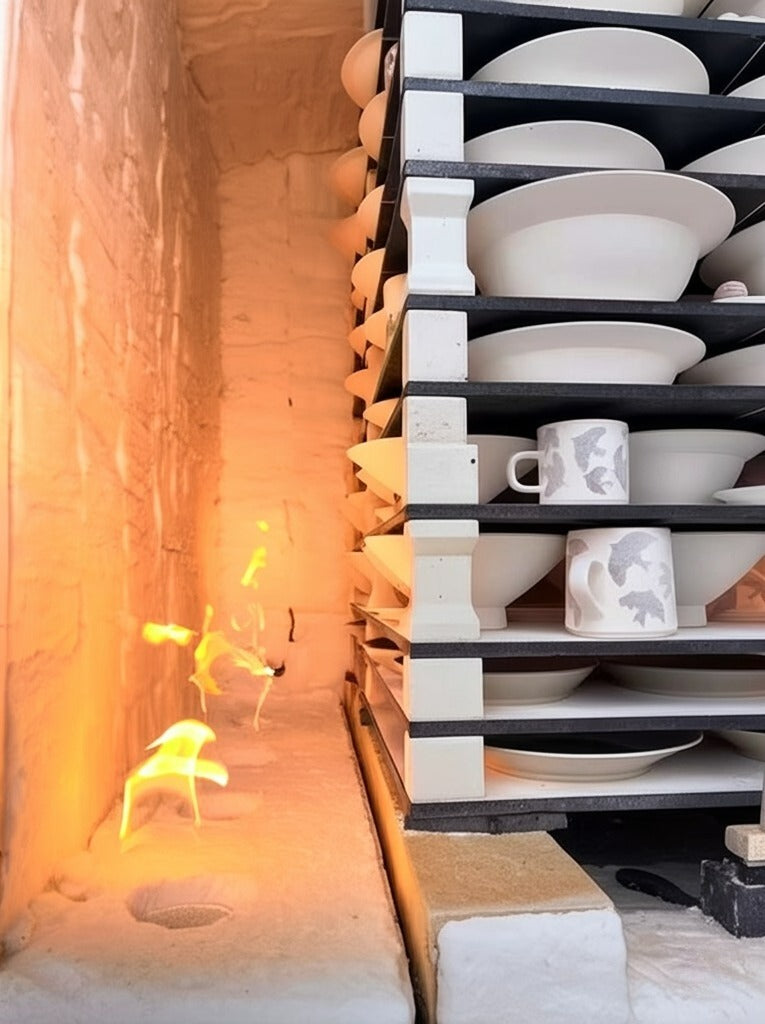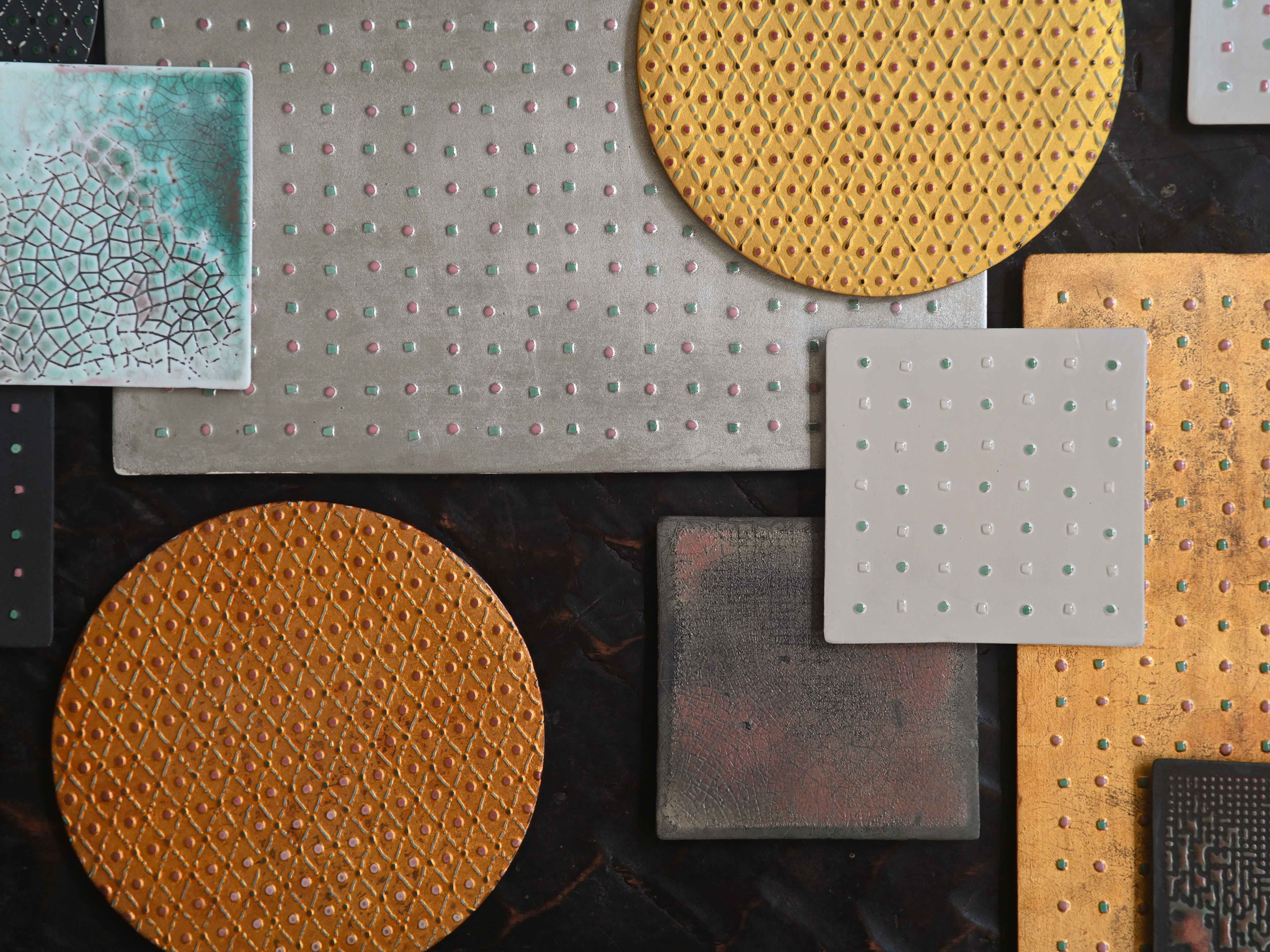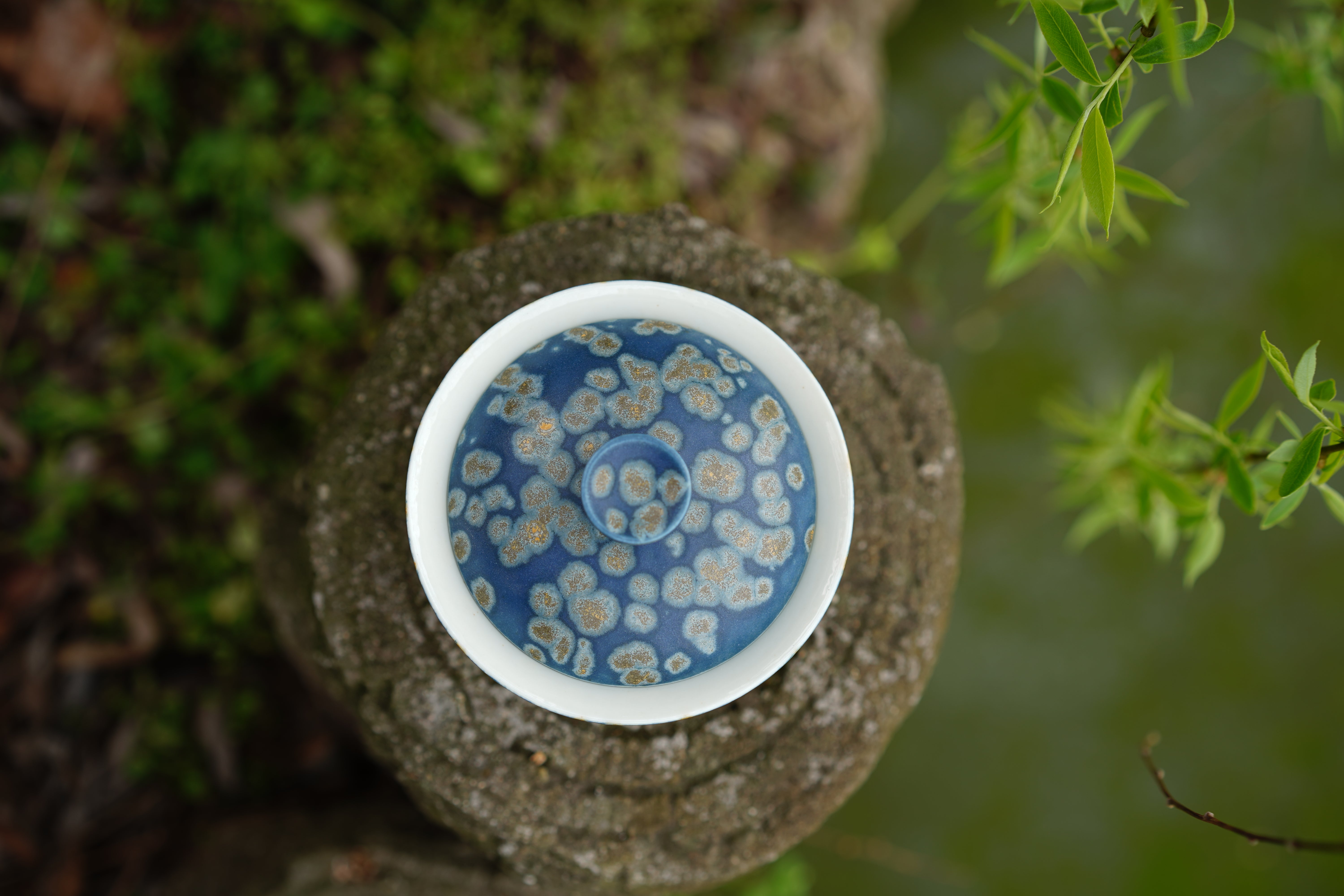
High-Temperature Colored Glaze
By incorporating various metal oxide colorants into the glaze mixture and firing the clay body in kilns at temperatures between 1250 and 1320 degrees Celsius, a diverse and splendid range of glaze colors emerges. The production process is extremely meticulous, requiring carefully selected minerals ground into fine particles and mixed with water, kaolin, limestone, and other base materials to create the glaze slurry. The same glaze composition can yield dramatically different results due to variations in firing conditions.This craft, worthy of being called "man-made gemstone," possesses visual charms including "brilliance, color, translucency, purity, and iridescence." During the transformation in the kiln, unique textures such as flowing patterns, crystallization, and crazing emerge, constructing a dreamlike artistic space of wondrous phenomena. It is precisely this interweaving of chance and inevitability that endows each piece with its unique vitality.

3D Printed with Classical Glaze Colors
Inspired by the tri-colored glazes of ancient Chinese ceramics, the artists draw inspiration from traditional lacquerware and printmaking techniques. Their contemplation of nature's essence is manifested in the patterns, order, codes, frequencies, and wavelengths present in our ceramic works. The rich and vibrant colors on the ceramics express the artists' inquiry into the operating principles of nature. Self-made glazes and our pioneering 3D-printed inlaid glaze technique, with saggar clay panels serving as the medium, add a foundational layer of "clay" to the "glaze" paintings. Modern technology and classical aesthetics, precise calibration and free-flowing liquids — all these conflicts and confrontations imbue this series of ceramic works with remarkable ambiguity and tension in their glaze expression, displaying abundant vitality.

Pouring Glaze
As a treasured masterpiece of ancient pouring glaze ceramic firing techniques, mixed colored glazed pottery was a low-temperature glazed pottery that flourished during the Middle Ages (at the same time of Chinese Tang Dynasty and Arabic Abbasid Dynasty). The glazes featured colors include green, blue, yellow and brown.
Historically, pouring glaze ceramics were relatively rare.
Due to the high fluidity of these colored glazes, different colors exist in a state of intermingling and fusion, creating the extraordinary phenomenon of "colors free flowing, brilliant light radiating" in the finished works. Consequently, it was often used to create complex and magnificent decorations.